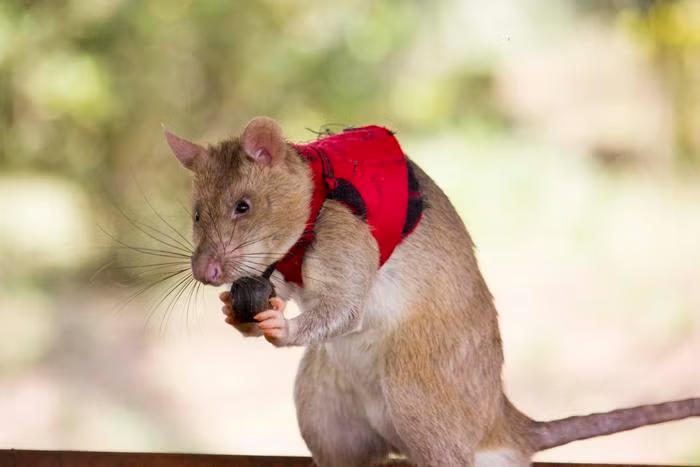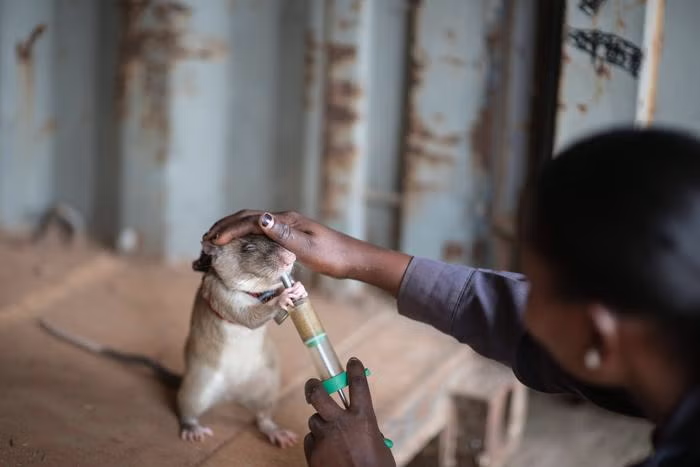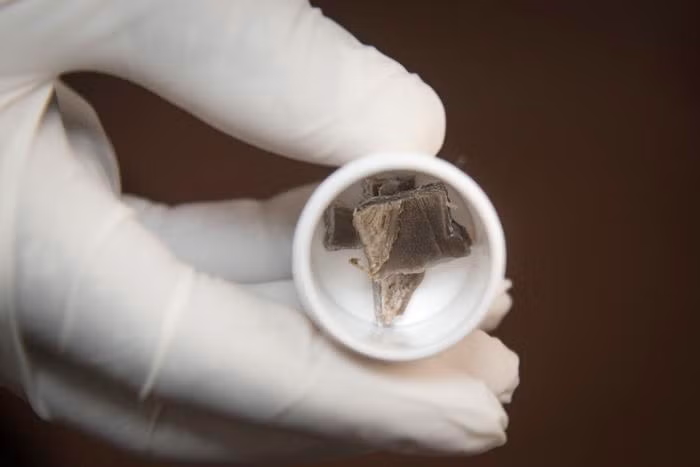Your support helps us to tell the story
Support NowThis election is still a dead heat, according to most polls. In a fight with such wafer-thin margins, we need reporters on the ground talking to the people Trump and Harris are courting. Your support allows us to keep sending journalists to the story.
The Independent is trusted by 27 million Americans from across the entire political spectrum every month. Unlike many other quality news outlets, we choose not to lock you out of our reporting and analysis with paywalls. But quality journalism must still be paid for.
Help us keep bring these critical stories to light. Your support makes all the difference.
The world’s largest rats could help conservationists in the ongoing fight against the illegal wildlife trade.
Researchers have trained African giant pouched rats to pick up the scent of highly-sought elephant tusks, rhino horns, African blackwoodand pangolin scales. The rare wood is threatened and the animals are critically endangered.
The rats weigh as much as nine pounds and measure up to 35 inches long from snout to tail and are classified an invasive species in Florida. In the past, the rats have been used to detect explosives. The rats are able to remember specific wildlife targets for several months.
“Our study shows that we can train African giant pouched rats to detect illegally trafficked wildlife, even when it has been concealed among other substances,” Dr. Isabelle Szott, a researcher at the Okeanos Foundation, said in a statement.

Scott and other researchers from around the world conducted research at APOPO, a Tanzania-based non-profit organization. APOPO is also training “rescue rats” to potentially save lives. The work was published Wednesday in the journal Frontiers in Conservation Science.
The researchers worked with 11 rats, including some named for wildlife conservationists and advocates.
The rats went through several stages of training, learning how to hold their noses for several seconds in a hole where the scent of the target was placed. If they performed the task correctly, they were rewarded with flavored rodent pellets.

Next, they were introduced to other smells, including coffee beans, laundry detergent powder and electric cables. These scents are all used by traffickers to mask the scent of wildlife. The rats were taught to single out the wildlife target smells.
They were also taught to remember scents after not smelling them for months. After periods of five and eight months, they were re-introduced to those scents. Despite months without exposure to the smells, the rats showed perfect cognitive retention. The researchers said, their scent memory resembled that of dogs, which are often trained to sniff out bombs.
But, dogs often can’t reach places that rats can.
“Existing screening tools are expensive and time intensive and there is an urgent need to increase cargo screening. APOPO’s rats are cost-efficient scent detection tools. They can easily access tight spaces like cargo in packed shipping containers or be lifted up high to screen the ventilation systems of sealed containers,” Szott said.

Next, the researchers will develop ways for their rats to work within ports used by wildlife smugglers. The rats will be outfitted with custom vests, and can use their paws to pull small balls attached to the chests that emit beeping sounds to signal their handlers that they have detected a target.
There were some limitations to the study. It was conducted in a controlled environment that is not reflective of the settings in which wildlife is commonly trafficked or screened by scent-detection animals. The researchers said new methods need to be developed.
More than 4,000 species are affected by wildlife trafficking around the world, according to the United Nations. The majority of those species are endangered. Nearly 6,000 species were seized from every country between 1999 and 2018, according to a 2020 report from Faunalytics.
The wildlife trade is the second-largest threat to species after habitat destruction, according to the World Wildlife Foundation. Illicit wildlife trafficking is estimated to gross between $7.8 billion and $10 billion per year, and illegal timber trade is estimated as much as $7 billion per year.
Disclaimer: The copyright of this article belongs to the original author. Reposting this article is solely for the purpose of information dissemination and does not constitute any investment advice. If there is any infringement, please contact us immediately. We will make corrections or deletions as necessary. Thank you.



